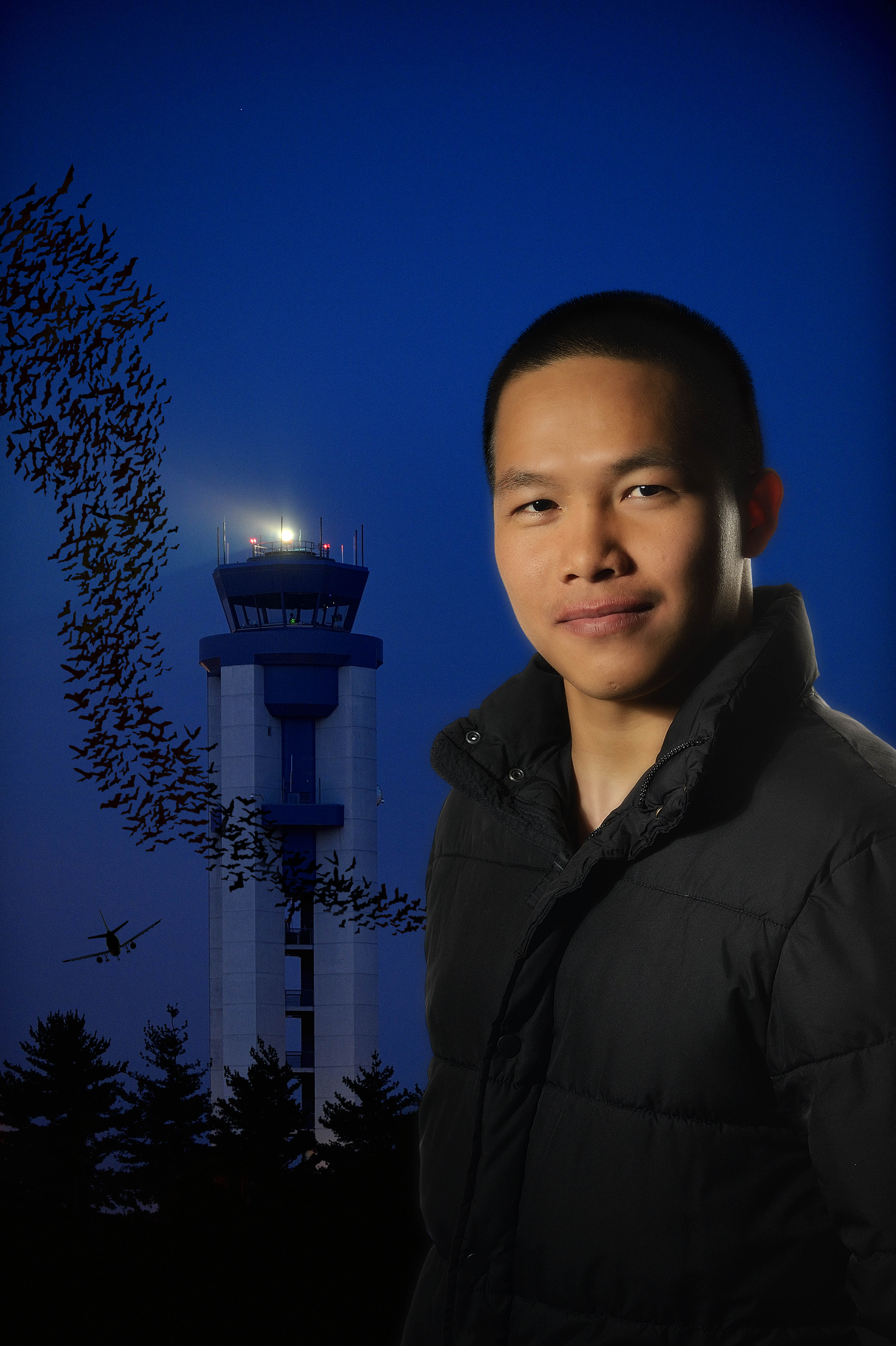Engineers study bats to improve aviation travel

Air travelers today often experience delays as a result of numerous airplanes parked on the ground and in the air at any given moment.
According to the Federal Aviation Administration, extensive planning is underway to make the best use of new and existing technology, infrastructure, and employees to handle the doubling and tripling of air traffic expected in the coming decades. Satellite-based navigation will allow aircraft to fly more direct routes and navigate around inclement weather, increase airspace capacity, and reduce delays.
Yuan Lin, of Guangdong, China, a graduate student in biomedical engineering and mechanics in the College of Engineering at Virginia Tech, is working to develop an air traffic control algorithm inspired by nature.
He is confident his research on bat swarming behaviors can effectively impact the current predicament of the air traffic control system.
Shortly after he arrived at Virginia Tech, Lin met Nicole Abaid, assistant professor of biomedical engineering and mechanics, who introduced him to dynamical systems and control. He became fascinated by the theoretical application of creating robotic vehicles to avoid collision -- the same way bats maneuver.
Shortly after their meeting, Lin joined Abaid's research group and currently works on a joint project with Rolf Müller, associate professor of mechanical engineering, funded by the university's Institute for Critical Technology and Applied Science.
Through observation of different animal species, the team found when bats fly they don't have difficulty flying near many peers. A large number of bats can simultaneously fly out of a cave without collisions with each other at night in the dark. Instead of using vision, they use echolocation. They emit pulses and process received echoes to locate targets in the environment. They switch frequencies, differentiating their own from their peers, to avoid frequency jamming.
"We developed the first generation agent-based model of the bat swarm, modeling it directly after the bats emerge from the caves through echolocation," said Lin.
This past summer, Lin traveled to Müller's laboratory in China to record bats' activities in the caves at night.
"It's been rewarding for me to work with Yuan on models for bat swarms using acoustic sensing because we get to constantly go back and forth between engineering and biology, balancing tractable math with complex phenomena observed by biologists," said Abaid. "I feel lucky that Yuan, although he's an engineer, is interested in straddling these two worlds, as it lets us get exciting and possibly more relevant results."
Lin is enthusiastic about the addition of Pat Artis, an engineering science and mechanics alumnus and professor of practice, to his doctoral defense committee.
"Since he is a pilot and has worked directly in the industry, he had practical knowledge from experience that will be extremely helpful to my research," Lin said of the Fortune 500 consultant and expert on aviation control systems.
Through collaboration and detailed research, Lin hopes to propose an innovative and applicable control algorithm for air traffic, so future airport delays may be limited and air travelers might have more pleasing experiences.
Inspired by the late Steve Jobs, Lin is convinced his role and commitment to solving air traffic quandaries and environmental dilemmas, "as a true scientist, is to make life simple, easier, and more beautiful."




